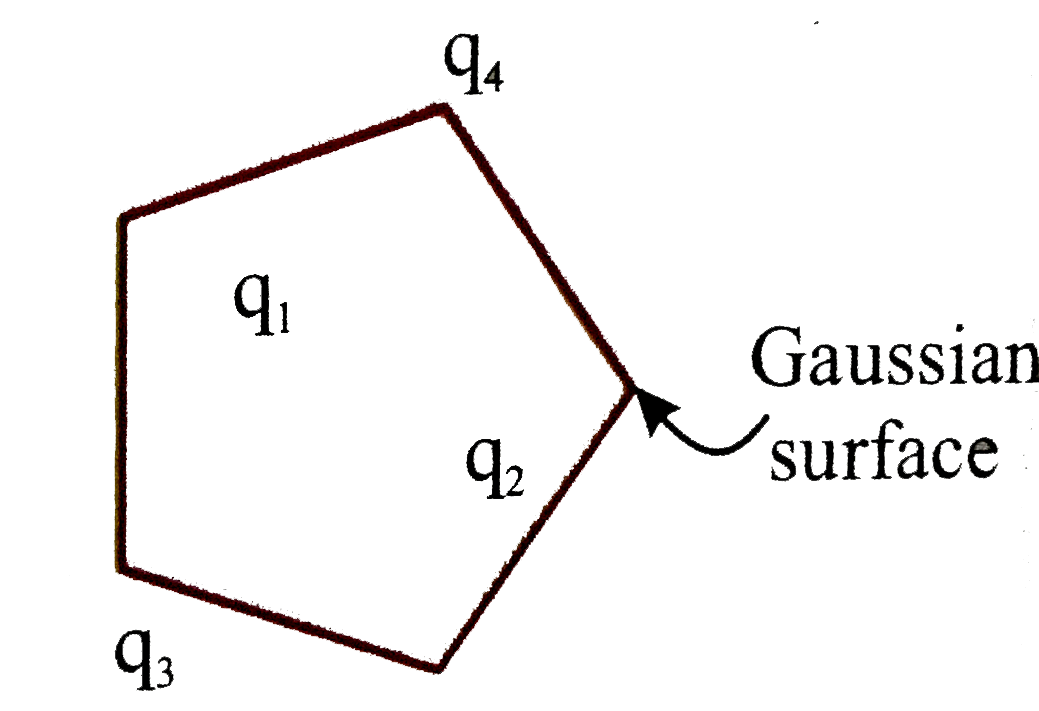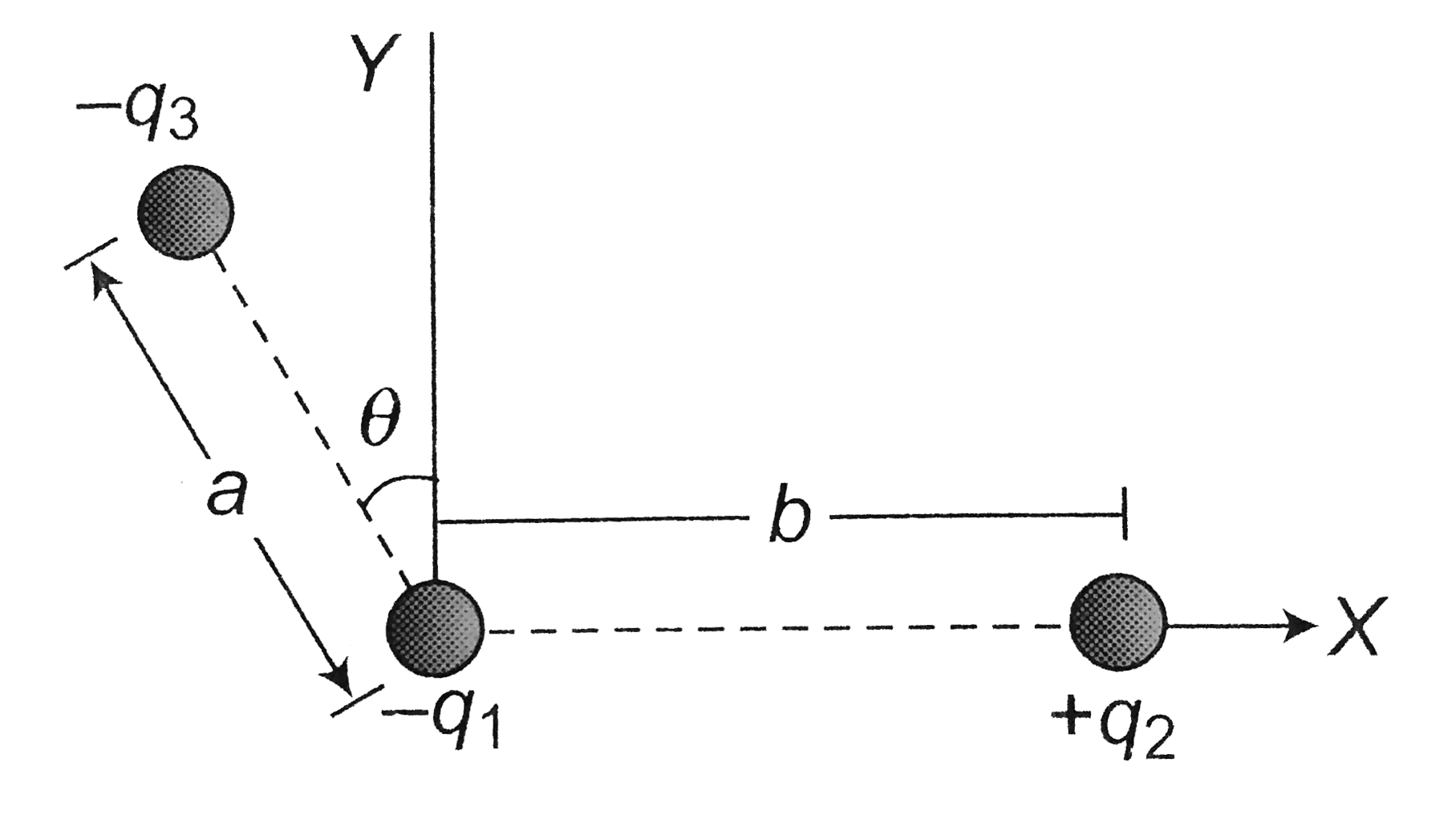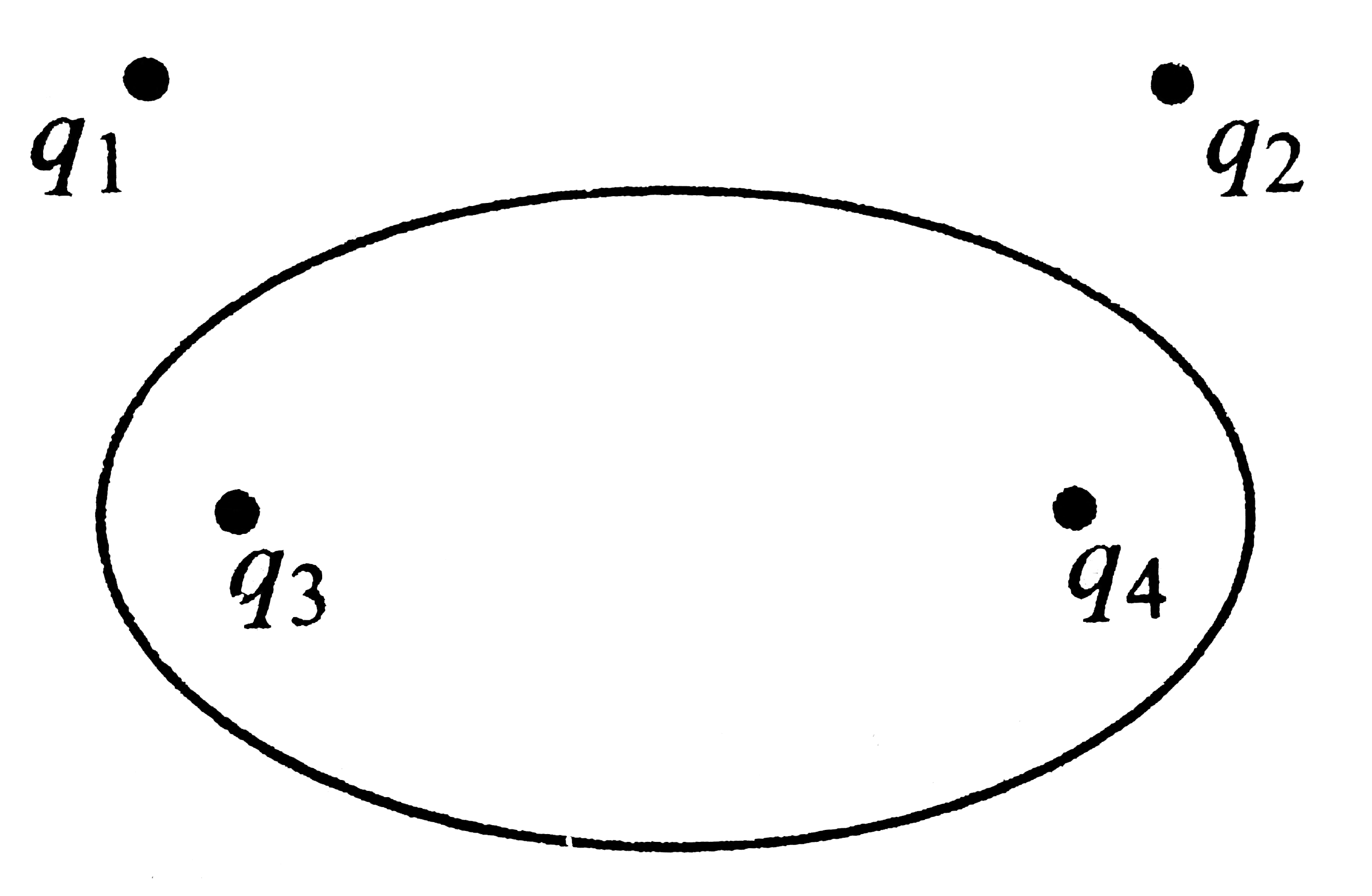Five charge q1,q2,q3,q4 and q5 are fixed at their positions as shown in figure, S is a Gaussian surface. The Gauss's law is given by ∫SE.dS=qε0. Which of the following statement is correct ?

E on the LHS of the above equation will have a contribution from q1,q5 and q1,q5 and q3 while q on the RHS will have a contribution from q2 and q4 only
E on the LHS of the above equation will have a contribution from all charges while q on the RHS will have a contribution from q2 and q4 only
E on the LHS of the above equation will have a contribution from all charges while q on the RHS will have a contribution from q1,q3 and q5 only
Both E on the LHS and q on the RHS will contribution from q2 and q4 only
The correct Answer is:B
Step by step video, text & image solution for Five charge q_(1), q_(2), q_(3), q_(4) and q_(5) are fixed at their positions as shown in figure, S is a Gaussian surface. The Gauss's law is given by underset(S)int E. dS = (q)/(epsi_(0)). Which of the following statement is correct ? by Physics experts to help you in doubts & scoring excellent marks in Class 12 exams.
Updated on:21/07/2023Topper's Solved these Questions
- ELECTROSTATICSBOOK - DC PANDEYCHAPTER - ELECTROSTATICSEXERCISE - Assertion and Reason
15 Videos
- ELECTROSTATICSBOOK - DC PANDEYCHAPTER - ELECTROSTATICSEXERCISE - Match the columns
5 Videos
- ELECTROSTATICSBOOK - DC PANDEYCHAPTER - ELECTROSTATICSEXERCISE - Check point 1.5
20 Videos
- ELECTROSTATIC POTENTIAL AND CAPACITORSBOOK - DC PANDEYCHAPTER - ELECTROSTATIC POTENTIAL AND CAPACITORSEXERCISE - (C) Chapter exercises
50 Videos
- GRAVITATIONBOOK - DC PANDEYCHAPTER - GRAVITATIONEXERCISE - All Questions
120 Videos
Similar Questions
Knowledge Check
five charge q1,q2,q3,q4and q5 are fixed at their positions as shown in figure .s is Gaussian surface .The Gauss's law is given by ∮→E.→ds=qε0

Which of the following statement is correct?A→E on the L.H.S of the above equation will have a contribution from q1,q5,and.q3 while q on the RHS will have a contribution from q2 and q4 only.B→E on the LHS of the above equation will have a contribution from all charges while q on the RHS will have a contribution from q2 and q4 only.C→E on the LHS of the above equation will have a contribution form all charges while q on the RHS will have a contribution from q1 q2 and q5 only.DBoth →E on the LHS and q on the RHS will have a contribution form q(2) and q4 only.q1,q2,q3 and q4 are point charges located at point as shown in the figure and S is a spherical Gaussian surface of radius R. Which of the following is true according to the Gauss's law
 A∮s(→E1+→E2+→E3).d→A=q1+q2+q32ε0B∮s(→E1+→E2+→E3).d→A=(q1+q2+q3)ε0C∮s(→E1+→E2+→E3).d→A=(q1+q2+q3+q4)2ε0DNone of these
A∮s(→E1+→E2+→E3).d→A=q1+q2+q32ε0B∮s(→E1+→E2+→E3).d→A=(q1+q2+q3)ε0C∮s(→E1+→E2+→E3).d→A=(q1+q2+q3+q4)2ε0DNone of theseTwo fixed charges −2Q and +Q are located at points (−3a,0) and (+3a,0) respectively. Then which of the following statement is correct?
APoints where the electric potential due to the two charges is zero in x-y plane, lie on a circle radius 4a and centre (5a,0)Bpotential is zero at x=a and x=9aCboth a and b are wrongDboth a and b are correct
Assertion: Four point charges q1,q2,q3 and q4 are as shown in Fig,The flux over the shown Gaussians surface depends only on charges q1 and q2
Reason:Electric field at all points on Gaussians surface depends on any charges q1 and q2

View SolutionConsider Gauss's law
∮→E⋅→ds=qε0
Then, for the situation shown in figure at the Gaussian surface

View SolutionThree charges −q1,+q2 and −q3 are placed as shown in the figure. The x-component of the force on −q1 is proportional to

View SolutionThree charges −q1,+q2 and −q3 are placed as shown in the figure. The x-component of the force on −q1 is proportional to

View SolutionFigure shows four charges q1,q2,q3,andq4 fixed is space. Then the total flux of the electric field through a closed surface S, due to all the charges, is

View Solution

